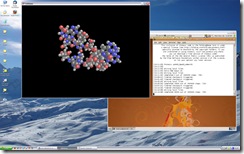The next major release of JRockit is finally out! Here are some highlights:
- Includes the all new JRockit Flight Recorder – supersedes the old JRockit Runtime Analyser. The new flight recorder is inspired by the “black box” in airplanes. It uses a highly efficient recording engine and thread local buffers to capture data about the runtime and the application running in the JVM. It can be configured to always be on, so that whenever anything “interesting” happens, data can be dumped for some time back. Think of it as your own personal profiling time machine.
- Automatic shortest path calculation in Memleak – no longer any need for running around in circles when trying to find your way back to a thread root from an instance.
- Memleak can now show class loader related information and split graphs on a per class loader basis.
- More easily configured JMX agent – default port for both RMI Registry and RMI Server can be configured, and is by default the same, allowing easier configuration of firewalls.
- Up to 64 GB (was 4GB) compressed references.
- Per thread allocation profiling in the Management Console.
- Native Memory Tracking – it is now possible to track native memory allocations with very high resolution. The information can either be accessed using JRCMD, or the dedicated Native Memory Tracking experimental plug-in for the Management Console (alas only available for the upcoming 4.0.1 release).
- JRockit can now produce heap dumps in HPROF format.
- Cooperative suspension – JRockit is no longer using system signals for stopping threads, which could lead to hangs if signals were lost or blocked (for example bad NFS shares). Now threads check periodically to see if they are suspended.
- VPAT/Section 508 compliant JRMC – greatly improved keyboard navigation and screen reader support.
See New and Noteworthy for more information.
JRockit Mission Control 4.0.0 can be downloaded from here:
http://www.oracle.com/technology/software/products/jrockit/index.html
There is even a book to go with JRMC 4.0.0/JRockit R28! 🙂http://www.packtpub.com/oracle-jrockit-the-definitive-guide/book/




